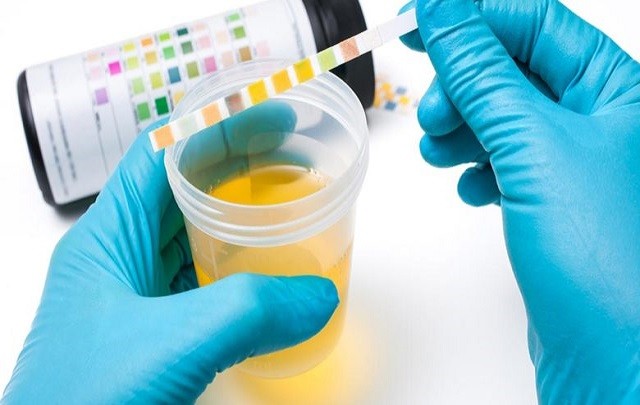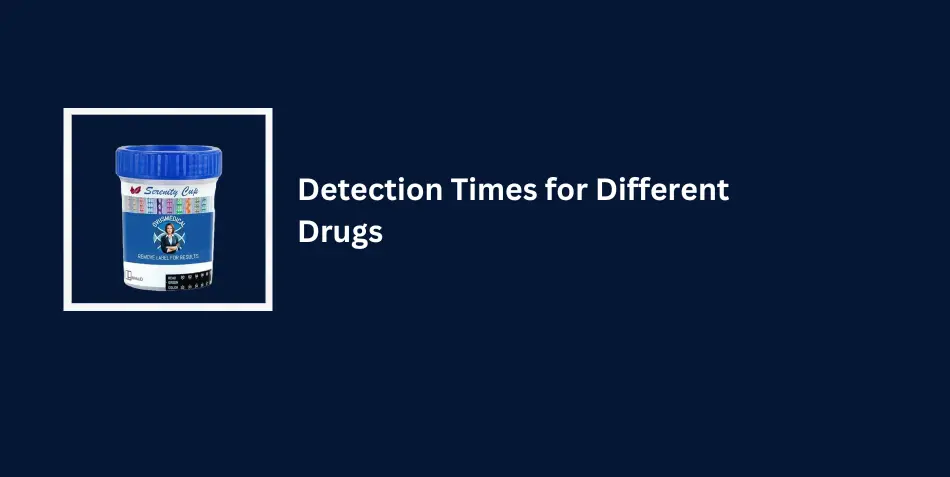Detection Times for Different Drugs
There is a higher demand for drug testing nowadays. More and more situations require people across the country to take part in drug tests. The number of random drug testing policies is also rising, as situations require people nationwide to take part in drug tests. The number of random drug testing policies is also rising with this. People want to know more about the length of time that drugs can be detected in an individual. Employers want to know that. They have a good idea of what to look for. How long they can look for it while other internet searchers want to know how bad it is. They are stuck in a situation if they get into trouble for testing positive for drug use.
Drug detection times
The use of drugs is starting to reach epidemic levels in the country. The number of people driving under the influence of different substances has also increased rapidly and is a matter of great concern. The ability to test individuals for drugs can provide critical information to both law enforcement officials and the public. Defendants in any resulting proceedings that have to take place in court.
This is why we are going to take a look at the drug detection timetables for different drugs. Before we start looking into individual drugs and their drug detection times, it is important to take note of the several variables that come into play here. These include an individual’s body mass, hydration, and frequency of drug use. Amount of drug use and different kinds of drug tests like urine drug tests and hair follicle testing. Saliva testing. This list provides an estimated timetable. The drugs might be detected in an individual across different types of drug testing methods.
Buy Drug Tests at the Lowest Prices, Guaranteed
Drug Detection Time for Amphetamines
Determining how long amphetamines are detected in an individual depends on a number of variables. That we’ve mentioned above. also known as Delcobase, Obetrol, Meth, and Crosses. This disease can be detected for a shorter period of time through some tests. But it can be detected through other tests for a period of up to 90 days. Here is a look at the estimated drug detection time for amphetamines. which were sorted by various drug testing methods: • Urine drug tests can detect amphetamines in a person for roughly two to five days after the last use of the substance. • Blood tests can detect the use of amphetamines within 12 hours of the last time amphetamines were used by a person. • Saliva drug tests can detect the use of amphetamines in a person for one to five days. after the last use of the substance. • Hair drug tests can detect the use of amphetamines for up to three months after the last use.

Drug Detection Time for Barbiturates
Sedative and hypnotic drugs, such as barbiturates, are prescription drugs. Which might be prescribed to help people deal with acute migraines, control seizures, and provide medical anesthesia. If the medicine has been prescribed to you. You need to know that barbiturates that interact with alcohol can be harmful to you. A subject of severe controversy, the substance derived from the cannabis plant One of the naturally produced chemical compounds in the plant, called THC, interacts with the endocannabinoid system of the human body to provide psychoactive effects. There are a number of factors that affect how long THC can be detected in your system.
Here is a look at the estimated drug detection time for marijuana, sorted by various drug testing methods:
• Urine drug tests can detect marijuana in a person for three days after one-time use. Moderate use (4 to 5 times a week) can be detected 5 days after the last use. Daily users can expect marijuana to be detected in their urine for 10 days after their last use, and chronic users (who have been using marijuana for a long time) can expect the substance to be detected in their urine for 30 days.
Blood tests can detect the use of marijuana within 24 to 48 hours of the last use. Long-term and chronic use of marijuana can lead to it being detected in blood tests for up to 25 days after the last use. • Saliva drug tests can detect the use of marijuana in a person for one to three days after the last use of the substance. Chronic users can expect the substance to be detected in their saliva for one to four weeks after their last use (given that they have terrible oral hygiene). • Hair drug tests can detect the use of marijuana for up to three months after the last use. It cannot detect one-time or very sparse usage of marijuana effectively.
MDMA or Molly
Drug Detection Time for Ecstasy Also known as MDMA or Molly, ecstasy is an illegal synthetic drug. People use ecstasy for its mild hallucinogenic and stimulant properties, as well as its ability to enhance emotional sensitivity. Unlike prescription drugs, ecstasy is never manufactured in a standard dosage. It is made in illegal labs, which, of course, will have no regulatory oversight for dosage control. That makes it especially dangerous. Because overdosing on ecstasy can be fatal for a person,
Here is a look at the estimated ecstasy drug detection times for various drug testing techniques:
Urine drug tests can detect ecstasy in a person for one to three days after the last use, but it takes at least one or two hours before it is first excreted through the urine. • Blood tests can detect the use of ecstasy within one to two days of the last use. It can be detected in the blood after 15 to 30 minutes because of the time it takes to be transported to the liver and broken down to enter the bloodstream.
Saliva drug tests can detect the use of ecstasy in a person for one to two days after the last use of the substance. • Hair drug tests can detect the use of ecstasy for up to three months after the last use. Drug Detection Time for Benzodiazepines: Benzodiazepines are sedatives that are prescribed as an anti-anxiety medication. They are available legally if a person has a prescription from a qualified medical professional, and they should use them if they need them.
More products we offer:
Benzodiazepines with Valium
There are several different kinds of benzodiazepines, with Valium, Xanax, and Ativan being the most common ones. Knowing how long these drugs can last in your system is important because they interact with other substances you might consume and cause unusual or possibly even dangerous side effects.
Here is a look at the estimated drug detection time for benzodiazepines, sorted by various drug testing methods, but the actual time can vary depending on the benzodiazepine drug used:
• Urine drug tests can detect benzodiazepines in a person for two days or even up to over a week after the last use of the substance. Diazepam (Valium) can be detected in urine for up to 10 days after use. Intermediate-acting benzodiazepines like oxazepam (Serax), alprazolam (Xanax), and clonazepam can be detected for up to 5 days in a urine drug test. Short-acting benzodiazepines like flurazepam and triazolam can be detected for up to 2 days after use.
Blood tests can detect the benzodiazepines a few hours after the last time a person used them. They have the earliest and shortest drug detection times for benzodiazepines. • Saliva drug tests can detect the use of benzodiazepines in a person for up to seven days after the last use of the substance. A study that saw clonazepam being detectable in saliva after 5 days, while alprazolam is detectable for up to over two days. • Hair drug tests can detect the use of benzodiazepines for up to three months after the last use.

